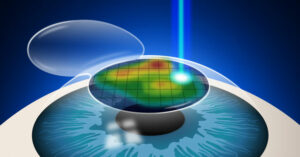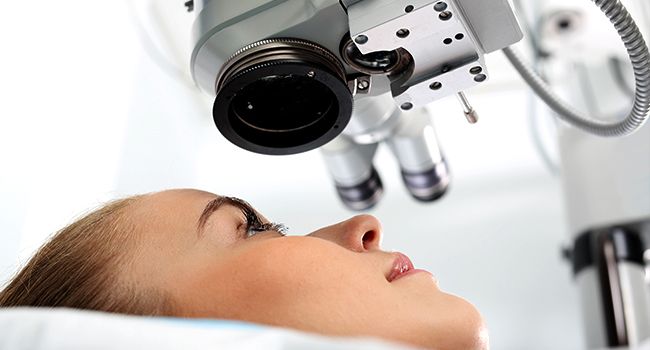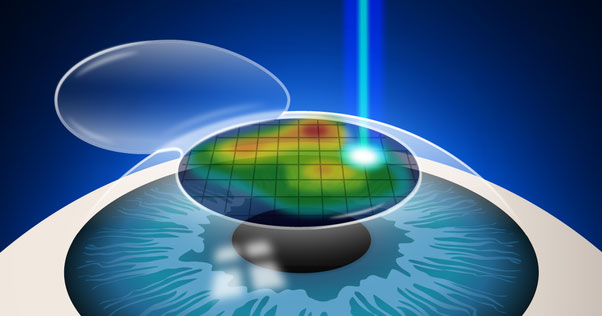Are you having trouble with your vision? Are you looking for a breakthrough treatment that can help improve your eyesight? If so, then you should consider Contoura surgery. This is a new and innovative procedure that can help correct many common vision problems. In this blog post, we will discuss the benefits of Contoura surgery and how it can help improve your eyesight!
Contents
What is Contoura Surgery?
 Contoura Surgery is a type of laser vision correction that uses an excimer laser to reshape the cornea of the eye. It is a minimally-invasive procedure used to treat common vision problems, such as astigmatism and nearsightedness. Contoura Surgery can also be used to treat some types of eye diseases, such as glaucoma and cataracts. Contoura Surgery procedures are relatively fast and safe with excellent results in most cases. Recovery times vary depending on the type of procedure performed but can typically take several weeks or less for results to become fully visible.
Contoura Surgery is a type of laser vision correction that uses an excimer laser to reshape the cornea of the eye. It is a minimally-invasive procedure used to treat common vision problems, such as astigmatism and nearsightedness. Contoura Surgery can also be used to treat some types of eye diseases, such as glaucoma and cataracts. Contoura Surgery procedures are relatively fast and safe with excellent results in most cases. Recovery times vary depending on the type of procedure performed but can typically take several weeks or less for results to become fully visible.
Types of Contoura Surgery
Many types of Contoura Surgery can be performed on the eyes. The procedure can correct certain visual disturbances, such as astigmatism, near-sightedness (myopia), and far-sightedness (hyperopia). It can also treat eye diseases such as cataracts and glaucoma. Contoura Surgery is an advanced form of laser vision correction and uses a highly precise excimer laser to reshape the cornea.
Some of these types are:
LASIK
One of the most commonly performed Contoura Surgery procedures is LASIK. This procedure uses a laser to reshape the cornea and correct vision problems, such as astigmatism. During the procedure, a thin flap of tissue is created on your eye with a precise cutting tool. The excimer laser is then used to make precise adjustments to reshape the cornea. Afterward, the flap of tissue is replaced and the recovery process begins. LASIK makes it possible to correct vision problems quickly and efficiently with minimal discomfort.
PRK
Photorefractive Keratectomy (PRK) is another type of Contoura Surgery that can be used to treat vision issues. This procedure is similar to LASIK, but instead of making a flap in the cornea like in LASIK, the laser removes a thin layer of tissue from the surface of the eye. This procedure can also be used to treat certain eye diseases, such as cataracts. The recovery time for PRK may be longer than other types of laser vision correction procedures, but it is safe and effective in many cases.
Epi-LASIK
Epi-LASIK is a type of Contoura Surgery that combines elements of both PRK and LASIK. During this procedure, the surface layer of cells on the cornea is gently separated from the underlying tissue before being reshaped with the excimer laser. This allows for more precise corrections than other types of this Surgery, making it an excellent choice for those with higher levels of refractive errors or irregularly shaped eyes. When done correctly, Epi-LASIK can provide excellent vision correction with minimal discomfort.
SMILE
A relatively new form of Contoura Surgery, SMILE (Small Incision Lenticule Extraction) is a procedure that uses a femtosecond laser to create a small incision on the surface of the cornea. The laser then creates a thin lenticular — or lens-shaped piece of tissue — that is removed from the eye. This procedure can be used to correct vision problems such as nearsightedness and astigmatism with minimal disruption to the surrounding tissue. As with most other types of Contoura Surgery, recovery times are usually fast and complication rates are low.
How is Contoura Surgery Performed?
 The work of this surgery is based on the principles of laser vision correction. It involves using an excimer laser to reshape the cornea, thereby correcting refractive errors such as nearsightedness and farsightedness. The procedure takes around 25 minutes per eye and is usually performed under local anesthesia.
The work of this surgery is based on the principles of laser vision correction. It involves using an excimer laser to reshape the cornea, thereby correcting refractive errors such as nearsightedness and farsightedness. The procedure takes around 25 minutes per eye and is usually performed under local anesthesia.
During this surgery, a tiny computer-controlled laser is used to precisely reshape the curvature of the cornea by your eye anatomy. The laser ablation is tailored to each patient’s vision prescription, providing a customized treatment that can result in improved vision quality compared to traditional methods.
During this Surgery, an ophthalmologist uses a computer-controlled scanning beam device in conjunction with a high-resolution 3D mapping system. These devices allow them to closely monitor the procedure and reshape the cornea to the exact specifications.
The procedure of Contoura surgery is fast and almost painless. Furthermore, it does not involve tissue removal, making it a safer option than other vision correction methods such as LASIK.
Through the use of advanced technology and personalized treatment, Contoura surgery can help improve vision in patients with refractive errors. The procedure offers several benefits compared to traditional methods, including improved accuracy and a reduced risk of complications.
One of the biggest advantages of Contoura surgery is its ability to provide greater precision in treating certain vision conditions. By using a customized treatment that is tailored to each patient’s eye, Contoura surgery can more accurately correct refractive errors and reduce the need for additional corrective procedures.
Benefits of Contoura Surgery
 There ate many benefits of Contoura Surgery, a breakthrough treatment for the eyes. It is an advanced, non-invasive procedure that can help improve vision and reduce astigmatism. Contoura Surgery offers patients a safer alternative to traditional invasive treatments such as LASIK and PRK.
There ate many benefits of Contoura Surgery, a breakthrough treatment for the eyes. It is an advanced, non-invasive procedure that can help improve vision and reduce astigmatism. Contoura Surgery offers patients a safer alternative to traditional invasive treatments such as LASIK and PRK.
Some of the benefits of this Surgery include:
• Improved vision. This procedure can help improve sight and reduce astigmatism by reshaping the cornea and improving its curvature. It also corrects refractive errors such as near-sightedness and farsightedness. Also, because it is non-invasive, it reduces the amount of time needed to recover from surgery.
• Low risk of complications and side effects. Contoura Surgery has a low risk of complications or side effects due to its accuracy and precision. It offers fast healing times with minimal downtime.
• No need for glasses or contact lenses after surgery. With this Surgery, you can say goodbye to wearing annoying glasses and contacts forever! The procedure corrects your vision so that you don’t have to rely on them anymore.
• Safe and effective. Contoura Surgery is a safer alternative to traditional invasive treatments, such as LASIK and PRK. It is also more precise than other eye treatments since it uses a computer-guided laser to reshape the cornea with precision and accuracy.
• Quick recovery time. Contoura Surgery has a quick recovery time compared to traditional invasive procedures. The procedure typically takes 15 minutes or less, and patients can be back to their normal activities within a few days.
• Low cost. This Surgery is an affordable alternative to traditional treatments, with the cost of one session typically under 40,000. The cost is usually covered by health insurance plans.
If you’re looking for a safe, effective, and cost-effective way to improve your vision and reduce astigmatism, this Surgery may be the right choice for you.
What Are The Potential Risks of Contoura Surgery?
 The potential risks of Contoura surgery include:
The potential risks of Contoura surgery include:
Vision Problems
One of the most common risks associated with Contoura surgery is that it may cause vision problems. These can include blurred vision, double vision, halos around lights, difficulties perceiving colors or distances, and light sensitivity. Though rare, more serious complications such as retinal detachment can be possible if the laser is used too close to the eye’s sensitive tissues.
Infection
Though very rare, infections can occur following any type of eye surgery. This can lead to further damage and reduction in vision quality if not treated immediately. Careful sterilization techniques are used when performing this surgery but infection remains a potential risk nonetheless.
Dry Eye Syndrome
Another potential issue that may arise from this Surgery is dry eye syndrome. This occurs when the eyes do not produce enough tears or the quality of tears is not adequate to keep the eyes lubricated and comfortable. To correct this, artificial tears can be used but some patients may need additional treatments such as punctal plugs or lipiflow treatments to restore natural tear production.
Scarring
Though rare, scarring of the eye’s surface can occur due to Contoura surgery. These scars may affect vision if they are located in areas that distort light entering the eye. In most cases, however, these scars will fade over time with proper care and treatment.
Overall, while all surgical procedures carry risks, this Surgery has a great track record of being safe and effective.
Conclusion
Contoura surgery is a cutting-edge eye treatment that has revolutionized the way we treat vision problems. It can correct astigmatism, nearsightedness, and farsightedness with quick, effective results that last for years. With its innovative technology and experienced surgeons, Contoura surgery offers a safe and reliable treatment to restore your perfect vision. If you’re looking for an effective way to improve your eyesight without the need for glasses or contacts, then Contoura surgery may be right for you. Talk to your doctor today to learn more about this incredible procedure and get started on the path toward the perfect vision.
Lasik surgery is a safe 10-minute procedure to help you get rid of glasses. MantraCare offers the most advanced Lasik options. If you have any questions about Lasik surgery feel free to reach out to us at +91-9711116605.
